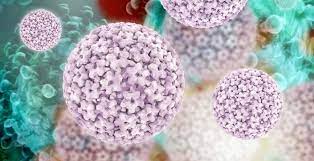Content of the Article
Ticks are parasites that belong to the class Arachnida and feed on the blood of mammals, birds, amphibians and reptiles. They are available in various sizes. It has eight legs and can range in color from brown to reddish-brown to black. Ticks thrive on warm, moist areas of the body. The bites of these animals are generally harmless, but some ticks carry diseases that are transmitted to humans when they bite, causing a range of symptoms. Diseases transmitted by ticks are more common in India and the United States. In our country, especially with the warming of the weather, some diseases are experienced as a result of tick bites in some regions. Some of them result in death. Now let's take a look at the diseases transmitted by ticks around the world.
What are tick-borne diseases?

1. Kyasanur Forest Disease (KFD)
Kyasanur forest disease is a reemerging zoonotic tick-borne arboviral disease caused by H. spinigera and H. turturis ticks, affecting males and monkeys. The disease was discovered in 1957 in the Kyasanur forest area in Shimoga district of Karnataka.
2. Lyme disease
The most common tick-borne disease is Lyme disease. Lyme diseaseIt is transmitted to humans through the bite of black-legged deer ticks. This disease has a detrimental effect on the brain, nervous system, heart, muscles and joints.
3. Rocky mountain spotted fever
This disease, whose real name is rocky mountain spotted fever, is a bacterial infection spread by ticks. It can cause chronic damage to internal organs such as the heart and kidneys. Symptoms of Rocky Mountain spotted fever are severe headache and high fever. The disease is most common in the southeastern part of the United States.
4. Colorado tick fever
It is a viral infection spread through the bite of an infected wood tick. Colorado tick fever symptoms include fever, headache, and chills. The disease is most prevalent in the state of Colorado, with the highest number of cases reported between February and October, with 90% of cases reported between April and July.
5. Tularemia
It is a rare infectious disease that mainly affects mammals. It can be spread to humans through an infected tick and direct exposure to an infected animal. Tularemia symptoms vary depending on where the bacteria enters the body.
6. Erlichiosis
Star ticks alone cause this bacterial disease, which causes flu-like symptoms such as diarrhea, pain, and fever. Lone star ticks are common in the Southeast and South Central United States.
7. Babesiosis
Babesiosis is a parasitic infection usually transmitted by tick bites. Symptoms include chills, muscle aches, fatigue, high fever, abdominal pain, etc. is found. It is most common in New York, England, Wisconsin, Minnesota, and New Jersey.
8. Recurrent fever
Recurrent fever is an infection spread by a certain type of tick. Symptoms include headache, chills, vomiting, cough, neck or eye pain, and diarrhea. Most cases of recurrent fever occur in the western part of the United States.
9. Human granulocytic anaplasmosis
Human granulocytic anaplasmosis is a tick-borne rickettsial infection transmitted to humans by ticks of the Ixodes ricinus species complex. Symptoms include vomiting, nausea, severe headache and fever.
10. Tick paralysis
Tick paralysis causes tingling and numbness all over the body as a result of tick bites. If left untreated, the disease can affect the lungs.
11. Tick-borne encephalitis
It is transmitted by the bite of infected ticks in forested habitats. Tick-borne encephalitis affects the central nervous system and causes symptoms such as headache, fatigue, fever and nausea.
12. Powassan encephalitis
Powassan encephalitis is a viral infectious disease caused by a tick bite. It is a rare disease that causes inflammation in the brain, the membranes around the brain and spinal cord.
13. Boutonneuse fever
It is caused by Rickettsia conorii and is transmitted by the dog tick Rhipicephalus sanguineus. Boutonneuse fever is a rare disease and is mostly found in Mediterranean countries.
14. Baggio-Yoshinari syndrome
Baggio-Yoshinari syndrome is a disease transmitted by the Amblyomma cajennense tick. The clinical features of this disease are similar to Lyme disease.
15. Crimean-Congo hemorrhagic fever
It is a viral hemorrhagic fever transmitted to humans through tick bites or contact with viremic animal tissues. Crimean-Congo hemorrhagic fever is common in Africa, the Middle East, Asia, and the Balkans.
16. Ehrlichiosis ewingii infection
Ehrlichiosis ewingii infection is spread to humans by the lone star tick called Amblyomma americanum. This tick is also known to transmit Ehrlichia chaffeensis, the bacterium that causes human monocytic ehrlichiosis.
17. Tick-associated rash disease
Lone star is caused by a tick bite, and the rash usually appears 7 days after the tick bite. It expands to 8 cm or more in diameter. Associated symptoms are fever, headache, fatigue and muscle pain.
Can tick-borne diseases be treated?
Antibiotics can cure the disease if diagnosed early.
How to prevent tick bite?
- Remove tall grass and trim bushes around the house.
- Mow your lawn often.
- Apply insect repellent cream to exposed skin when going outside.
- Dry clothes in a high-heat dryer for at least 10 minutes to kill ticks if they are stuck on your clothes.
- Check your pet's skin for ticks.
References: 1










